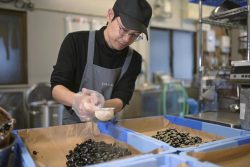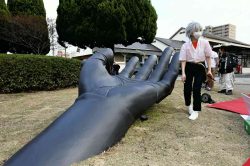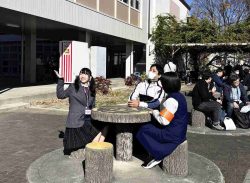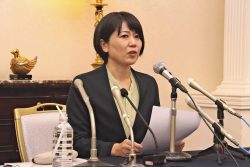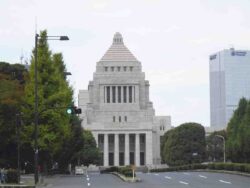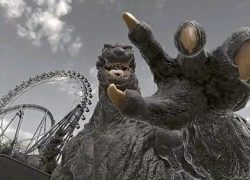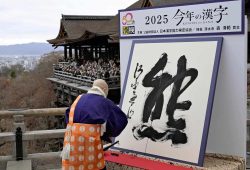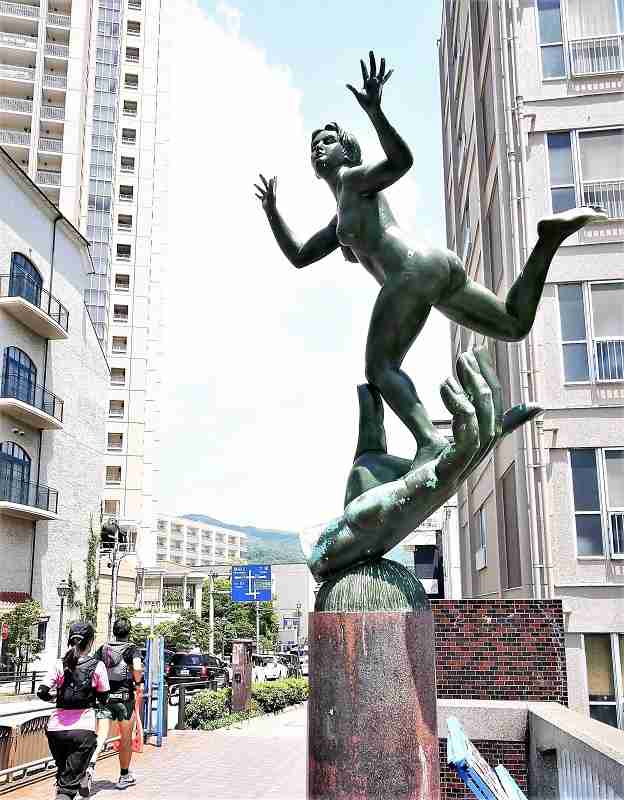
A statue from a pair titled “Mano d’Amore,” is seen in Takarazuka, Hyogo Prefecture, in May last year.
17:00 JST, May 7, 2022
TAKARAZUKA, Hyogo —The possible reinstallation of a pair of nude female statues in Takarazuka, Hyogo Prefecture, is reigniting a decades-old debate on whether the sculptures discriminate against women.
The work, “Mano d’Amore” (Hand of love), was created by Yuki Shintani (1937-2006), a sculptor from Kobe who also made a memorial monument, located in the Sannomiya district in Kobe, for the victims of the 1995 Great Hanshin Earthquake.
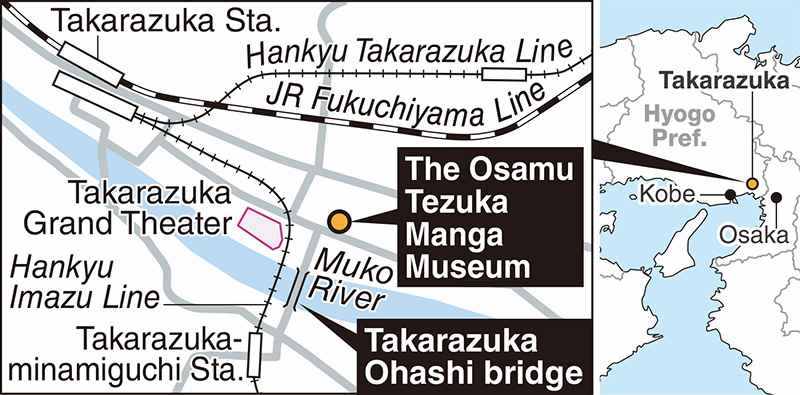
Shintani’s love-themed female statues are found all around Kobe, but the debate revolves around a pair of 3-meter-high bronze statues depicting naked women dancing on the palm of a hand. The statues were temporarily removed from the foot of Takarazuka Ohashi bridge last year when the bridge underwent heavy renovation. The question now is whether they should be reinstated.
Over 40 years ago, a local group asked Shintani to create the work in time for the bridge’s opening in March 1979. However, in February 1978, when production was still underway, an introductory text about the statues written in a public-relations magazine ignited criticism.
The text described the statues as “women standing on the palms of men’s hands while holding out hands full of love for humankind toward the sky.”
This led citizens’ groups to launch a campaign against the installation of the statues, claiming they were “misogynistic” and “contrary to the spirit of the Constitution, which stipulates the equality of the sexes.”
The groups distributed leaflets with messages from famous female politicians of the time who were against the installation, with some people going on hunger strike.
When interviewed by The Yomiuri Shimbun at the time, Shintani denied that the hands were male.
“They could be the hands of a man, a woman, a child or even God,” he said. “They can be the hands of anyone, depending on one’s point of view.”
The then mayor of Takarazuka said, “It’s a work of art expressing love for humanity, and there’s no reason to assume that it discriminates against women.”
A women’s group also formed in favor of the installation. Eventually, the statues were installed in time for the bridge’s opening ceremony in October 1978, with a statue on either side of the bridge’s northern sidewalks.
The Takarazuka municipal and Hyogo prefectural governments conducted a survey from December to January, after the statues were temporarily removed last year, to decide on a new design for the bridge’s sidewalk space.
Opinions from the public included more than a dozen negative comments on the statues, with one saying, “I don’t want them placed where many people pass by.”
But some said the statues should return to their original spot, with another commenting: “We should concentrate on how to design the landscape of the city center. The focus shouldn’t be placed solely on the statues, which will cause disputes among citizens.”
Many students say ‘no’
Asia University Prof. Yoko Takayama conducted a survey in her class last academic year regarding nude statues in public spaces. According to the cultural anthropology professor’s survey, 42 out of 67 students were averse to such statues.
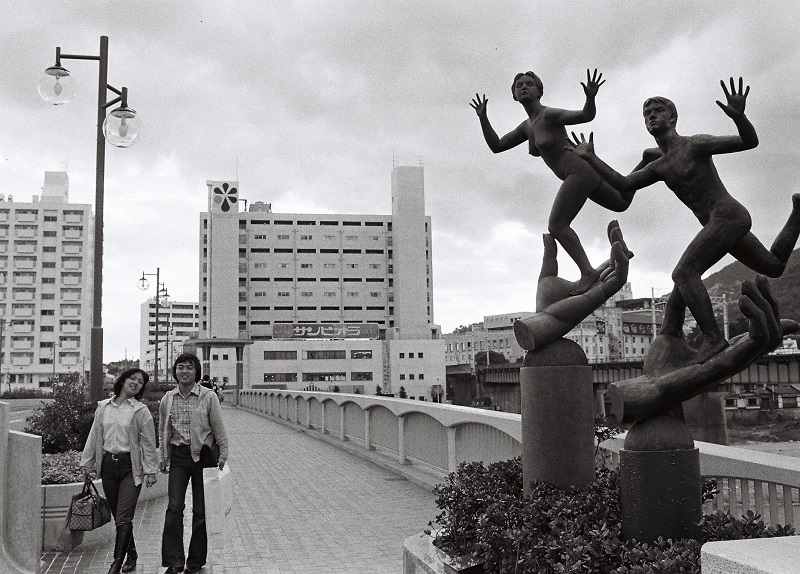
A photo taken in 1979 shows a nude male statue temporarily set next to a female statue.
Of the 42 respondents who did not approve, some said that nude statues should not be placed in public places if people find them offensive, and others said it was inappropriate from an educational standpoint. Sixteen students responded with ambivalence and nine had no issue with such installations, saying nudity can be “a work of art with intentions and messages” and “can be considered a symbol of peace, as nudity means they are unarmed, implying the absence of hostility.”
“I was surprised to find such strong sentiments of aversion from the students.” Takayama said. “I’d thought the number people opposed [to such statues] would at least be the same as those who supported [such works], as students have a good understanding of art. Statues of naked women have been installed around the nation without explanation as to why they symbolize peace.
“It’s understandable that some people feel sad when a familiar sight changes, but one solution could be displaying such statues in galleries, so they won’t be in the public eye.”
Related Tags
"Features" POPULAR ARTICLE
-

Sanrio to Open Museum in Yamanashi Pref. Dedicated to Founder, Exhibits Include Hello Kitty, Other Characters
-
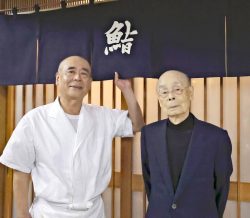
Legendary Sushi Chef Jiro Ono Turns 100: ‘I Have No Regrets’
-

Autumn Foliage Surrounds Visitors to Tokyo’s Showa Kinen Park
-

My Daughter No Longer Speaks to Me, But I Want to See Her and My Grandchild
-

Kumamoto: Public Bath Refurbished as Library Where You Can Chat, Take Photos
JN ACCESS RANKING
-

Japan’s Hopes for Seafood Exports Shot Down in China Spat
-

Keidanren Chairman Yoshinobu Tsutsui Visits Kashiwazaki-Kariwa Nuclear Power Plant; Inspects New Emergency Safety System
-

Japan to Charge Foreigners More for Residence Permits, Looking to Align with Western Countries
-

Imports of Rare Earths from China Facing Delays, May Be Caused by Deterioration of Japan-China Relations
-

Japan Exports Rise in October as Slump in U.S. Sales Eases



